How to plant sweet potatoes?
Written by Joy
Nov 08 2021

Sweet potatoes are a nutritious staple food and easy to plant and harvest. If you are more accustomed to eating potato salad or the baked potato, you might as well grow some yourself, because your own sweet potatoes are much more delicious than those bought in the supermarket. A plant of sweet potatoes can continue to produce new and pleasant potatoes, so you will harvest enough sweet potatoes to share with friends and family. This article will introduce you to the best time to plant potatoes, the most suitable environment for sweet potato growth, and the techniques to harvest as many potatoes as possible.
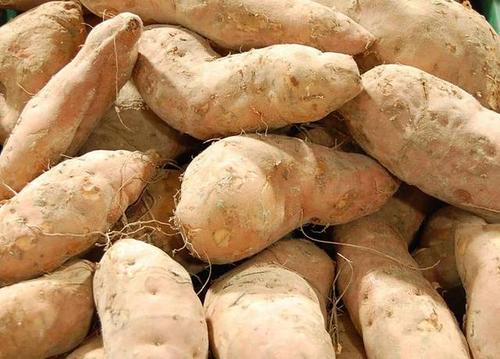 If you live in an area with a warmer climate, you don't have to worry about frosts. You can plant potatoes in autumn, because the high temperature in summer is not conducive to potato growth.
If you live in an area with a warmer climate, you don't have to worry about frosts. You can plant potatoes in autumn, because the high temperature in summer is not conducive to potato growth.
 Potatoes are suitable for growing on hillsides, so you have to pick up the soil to resemble hillsides. In addition, it is worth mentioning that clay soil is not suitable for growing potatoes.
Potatoes are suitable for growing on hillsides, so you have to pick up the soil to resemble hillsides. In addition, it is worth mentioning that clay soil is not suitable for growing potatoes.
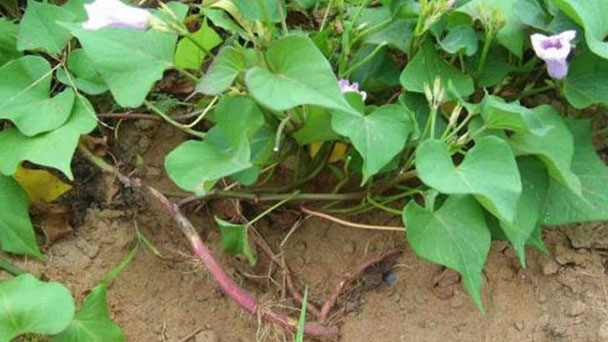 Gardeners are best not to use potatoes bought in the supermarket as seed potatoes, because these potatoes may suffer from diseases, which will affect the growth of crops.
Gardeners are best not to use potatoes bought in the supermarket as seed potatoes, because these potatoes may suffer from diseases, which will affect the growth of crops.
Yukon gold sweet potatoes, a medium ripe variety.
Superior sweet potatoes, a medium ripe variety.
Red Pontiac sweet potatoes, late varieties.
Kennebec potatoes, late varieties. A few days in advance, you'd better put larger seed potatoes in 4 cm long pieces, each with at least 2 buds. Small potatoes can be planted directly.
A few days in advance, you'd better put larger seed potatoes in 4 cm long pieces, each with at least 2 buds. Small potatoes can be planted directly.
If the potato can grow smoothly, its cut will gradually harden, so that when it is planted in the soil, this hard shell can play a protective role.
In order to make the soil more suitable for potato growth, it is a good choice to mix some organic fertilizer in it.
If it's a ditch, you just line up one by one; if it's a pit, then line up one by one.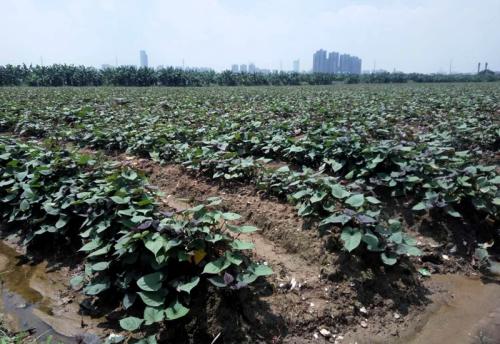 Covering the seed potatoes with 10 cm thick soil is necessary, but you'd better not fill up the ditch. The place where the potatoes are planted should be sunken.
Covering the seed potatoes with 10 cm thick soil is necessary, but you'd better not fill up the ditch. The place where the potatoes are planted should be sunken.
You should pay attention to water potatoes in the morning, so that the water on the leaves can evaporate before dark, otherwise the potatoes may get sick. Watering the plants when they are blooming. (Find more Winter Vegetables here.)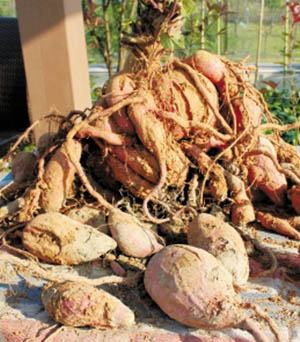 If you plant potatoes in a ditch, you can connect piles of soil into a long ridge; if you plant potatoes in a pit, you have to pile a large pile of soil.
If you plant potatoes in a ditch, you can connect piles of soil into a long ridge; if you plant potatoes in a pit, you have to pile a large pile of soil.
As the potato stems grow, it's time to pile up the soil every 2-3 weeks. Every time an additional layer of soil is piled up, new potatoes will begin to grow under the new layer of soil.
You'd better dig up the mound carefully. Then you could pick the largest potatoes and leave the small ones to continue growing.
You can stop watering at this time and wait a week for the potatoes to dry out in the soil. Gardeners ought to dig the mound carefully, and at the same time, gardeners should pay attention to be careful not to hurt the potatoes, and then pick off the mature potatoes one by one.
Gardeners ought to dig the mound carefully, and at the same time, gardeners should pay attention to be careful not to hurt the potatoes, and then pick off the mature potatoes one by one.
Dry the harvested potatoes on the soil for 1-2 days. Gardeners had better wash them before thoroughly drying.
If it rains continuously, you can also dry it indoors.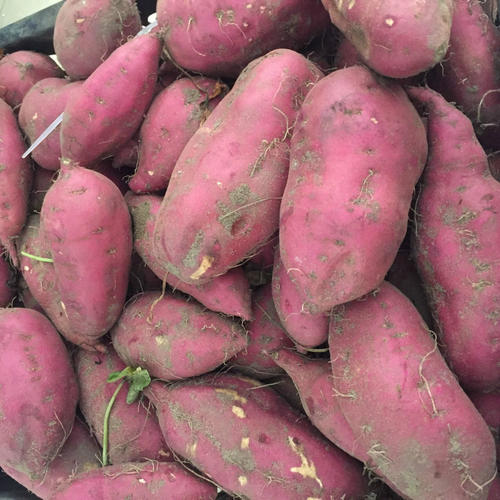 Pathogenic bacteria mainly in the potato with the disease and the potato remains in the soil in the residual root left in the winter, the summer. After potato sowing, the pathogen infects the bud and young stem to form the central disease plant with disease spots. At low temperature and high humidity (temperature 18℃~22℃, humidity above 90%), the bacteria invade the stomata or epidermis of the plant and develop the disease. The pathogen invaded from the wound, the bud eye and the skin hole of the potato block, causing the edge of the plant leaves to produce water-impregnated dark brown spots, and the stem to produce brown spots of different lengths and slightly concave. If you don’t timely remove the diseased leaves or eliminate the diseased plant of sweet potatoes, it will spread ten, ten hundred, leading to a plant sweet potato seedlings wilt and die, the underground potato one by one produce brown or light purple pink spots, and then become subcutaneous pink dry rot or internal wet rot rot.
Pathogenic bacteria mainly in the potato with the disease and the potato remains in the soil in the residual root left in the winter, the summer. After potato sowing, the pathogen infects the bud and young stem to form the central disease plant with disease spots. At low temperature and high humidity (temperature 18℃~22℃, humidity above 90%), the bacteria invade the stomata or epidermis of the plant and develop the disease. The pathogen invaded from the wound, the bud eye and the skin hole of the potato block, causing the edge of the plant leaves to produce water-impregnated dark brown spots, and the stem to produce brown spots of different lengths and slightly concave. If you don’t timely remove the diseased leaves or eliminate the diseased plant of sweet potatoes, it will spread ten, ten hundred, leading to a plant sweet potato seedlings wilt and die, the underground potato one by one produce brown or light purple pink spots, and then become subcutaneous pink dry rot or internal wet rot rot.
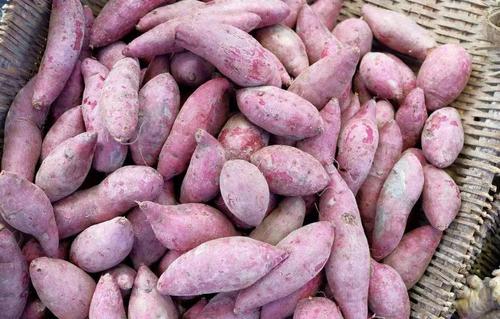 1. 800 times acrylic liquid of 72.2% for late disease prevention and control; 64% disinfectant alum 500 times liquid; 47% Giarinon liquid 600 times ~800 times; 72% kroo 600 times liquid.
1. 800 times acrylic liquid of 72.2% for late disease prevention and control; 64% disinfectant alum 500 times liquid; 47% Giarinon liquid 600 times ~800 times; 72% kroo 600 times liquid.
2. 1000 times liquid for prevention and control of early epidemic diseases; 77% can kill 500 times liquid; 75% chlorothalonil 600 times liquid; 64% disinfectant alum 500 times liquid. Every 6 days to 7 days, you should continuously spray 3 times to 4 times.
Preparation before plantingChoose the right planting location of sweet potatoesAdequate lightThe soil is fertile and looseUnobstructed drainageBuy seed potatoesChoose your favorite sweet potato varietiesPlant sweet potatoesTreat the soil of sweet potatoesTrenchingDig a pitPlant seed potatoesBabysit potatoesMound your sweet potatoesHarvest sweet potatoesHarvest ripe sweet potatoesLet the sweet potatoes air drySweet potatoes storageLate and early blight of sweet potatoesPharmaceutical prevention and control of sweet potatoes
Preparation before planting
If you live in an area with a cool climate, you'd better plant potatoes after the first frost in spring.
Choose the right planting location of sweet potatoes
Potatoes are tubers of plants that grow underground. There is also a stem with green leaves on the ground. When you are looking for planting locations in your own garden, it's necessary to pay attention to whether the selected place of potatoes has the following characteristics.Adequate light
Although sweet potatoes are not suitable for growing in an environment where the temperature is too high, adequate sunlight is still essential. Therefore, the location you choose must be able to get sunlight most of the day.The soil is fertile and loose

Unobstructed drainage
Potatoes cannot be planted in soil that is prone to water, or they will rot. Therefore, you'd better find a place with unobstructed drainage. In addition, gardeners must ensure that the soil of potatoes does not have too much moisture when the potatoes are planted.Buy seed potatoes
Seed potatoes are potatoes that have germinated. You can either order virus-free seed potatoes or buy potatoes directly from the agricultural supply store.
Choose your favorite sweet potato varieties
The following varieties of potatoes are more suitable for home planting:Yukon gold sweet potatoes, a medium ripe variety.
Superior sweet potatoes, a medium ripe variety.
Red Pontiac sweet potatoes, late varieties.
Kennebec potatoes, late varieties.
Plant sweet potatoes
One week in advance, you can put the seed potatoes in a warm, sunny place at home, which will help the potatoes germinate.
If the potato can grow smoothly, its cut will gradually harden, so that when it is planted in the soil, this hard shell can play a protective role.
Treat the soil of sweet potatoes
You'd better use gardening tools to loosen the soil where the potatoes will be planted, and remove the stones and plant rhizomes inside.In order to make the soil more suitable for potato growth, it is a good choice to mix some organic fertilizer in it.
Trenching
After digging a ditch 10 cm wide and 15 cm deep, you can dig another ditch tens of centimeters apart.Dig a pit
If you don't have enough space to dig rows of trenches, you can also dig a pit 7.5 cm wide and 15 cm deep.Plant seed potatoes
Gardeners should plant the seed potatoes in the ditch you just dug with 30 cm between them.If it's a ditch, you just line up one by one; if it's a pit, then line up one by one.

Babysit potatoes
Potatoes should be watered frequently, but not too much. The soil should always be kept a bit moist.You should pay attention to water potatoes in the morning, so that the water on the leaves can evaporate before dark, otherwise the potatoes may get sick. Watering the plants when they are blooming. (Find more Winter Vegetables here.)
Mound your sweet potatoes
After about 5 weeks, the potato stems will grow to a few centimeters above the ground. At this time, you need to pile up the surrounding soil along the stems. You can pile up the entire stem with soil, or leave aside. Point to the top. In this way, fresh potatoes will begin to grow from the mound, which is the top of the seed potatoes.
As the potato stems grow, it's time to pile up the soil every 2-3 weeks. Every time an additional layer of soil is piled up, new potatoes will begin to grow under the new layer of soil.
Harvest sweet potatoes
After 2-3 weeks, the potatoes begin to bloom, and the harvested potatoes are still tender and immature.You'd better dig up the mound carefully. Then you could pick the largest potatoes and leave the small ones to continue growing.
Harvest ripe sweet potatoes
When the leaves of potatoes begin to turn yellow and wither, the potatoes no longer grow.You can stop watering at this time and wait a week for the potatoes to dry out in the soil.

Let the sweet potatoes air dry
Ripe potatoes need to be air-dried for a few days before they can be stored. In this way, a hard skin will form on the outside of the potatoes to ensure that they will not rot within a few months.Dry the harvested potatoes on the soil for 1-2 days. Gardeners had better wash them before thoroughly drying.
If it rains continuously, you can also dry it indoors.
Sweet potatoes storage
It's a good choice to wash the sweet potatoes and store them in a dry, cool place, or eat them fresh to make your cheesy potatoes, potato salad or the baked potato.Late and early blight of sweet potatoes

Pharmaceutical prevention and control of sweet potatoes
Epidemic disease in the appropriate conditions, it is rapid and serious. Therefore, gardeners should investigate frequently. Diseased leaves and plants of sweet potatoes should be immediately picked and destroyed and sprayed for prevention and control. In addition to fometron, Zinc diazen, Bordeaux mixture, methyl topazine, there are also the following kinds of pesticides.
2. 1000 times liquid for prevention and control of early epidemic diseases; 77% can kill 500 times liquid; 75% chlorothalonil 600 times liquid; 64% disinfectant alum 500 times liquid. Every 6 days to 7 days, you should continuously spray 3 times to 4 times.
Read Next:
10 Best Winter Vegetables that Improve Your Health
15 Fall Vegetables to Plant for Your Autumn Garden
Latest Updated
- Benefits of Bugleweed - 7 Science-backed Health Benefits
- Bugleweed Dangers & Side Effects - Is It Poisonous?
- How to Plant Evergreen Trees - What You Should Know
- When to Plant Evergreens - Grow Guide for Evergreen Trees
- 12 Wonderful Evergreen Shrubs for Your Garden
- 12 Popular Evergreen Plants with Pictures for Beginners
- When And How To Prune A Lilac Bush Like a Pro
- How to Grow & Care for Lilac Vine (Hardenbergia Violacea)
- Japanese Lilac Tree (Syringa Reticulata) Care & Propagation Guide
- Shumard Oak Pros and Cons - What to Know
Popular Articles
- Winter maintenance of Antirrhinum Majus
- How to Grow Terminalia Mantaly Tree
- How to Grow and Care for Crossostephium Chinense
- How to grow Antirrhinum Majus in spring
- Peristeria Elata (Dove Orchid) Profile: Info & Care Guide
- Underwatered Snake Plant (Sansevieria Trifasciata) - Signs And How To Fix
- How to Care for Brazilian Jasmine Plant (Mandevilla Sanderi)
- How to Grow & Care for Graptopetalum Purple Delight in Summer
- Rosa Chinensis (China Rose): Plant Growing & Care Tips
- How to Care for Baby Sun Rose (Aptenia Cordifolia)